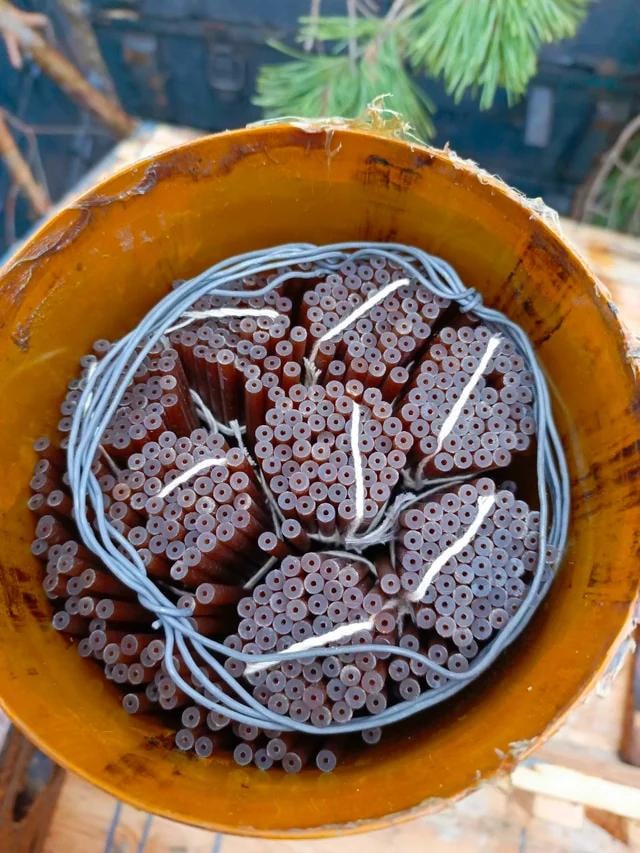
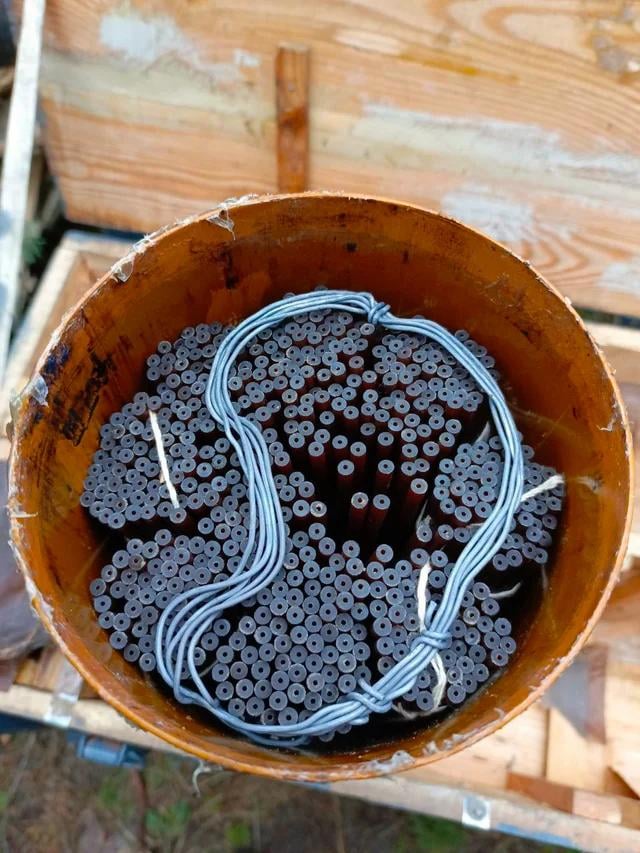
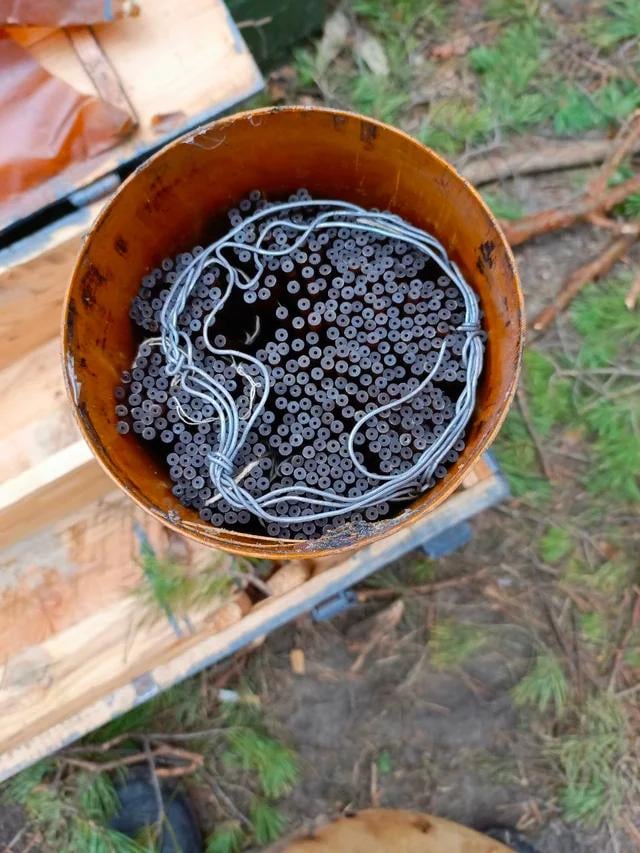
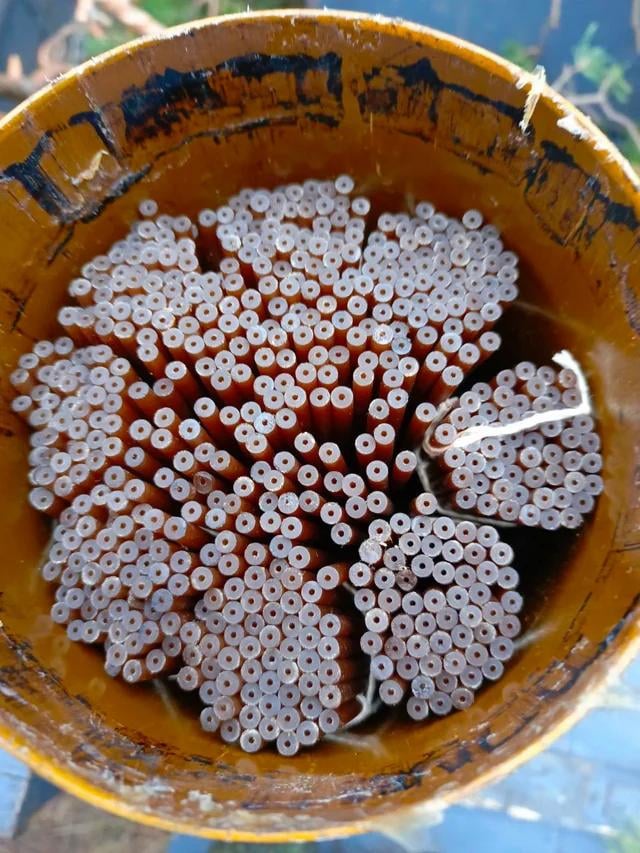
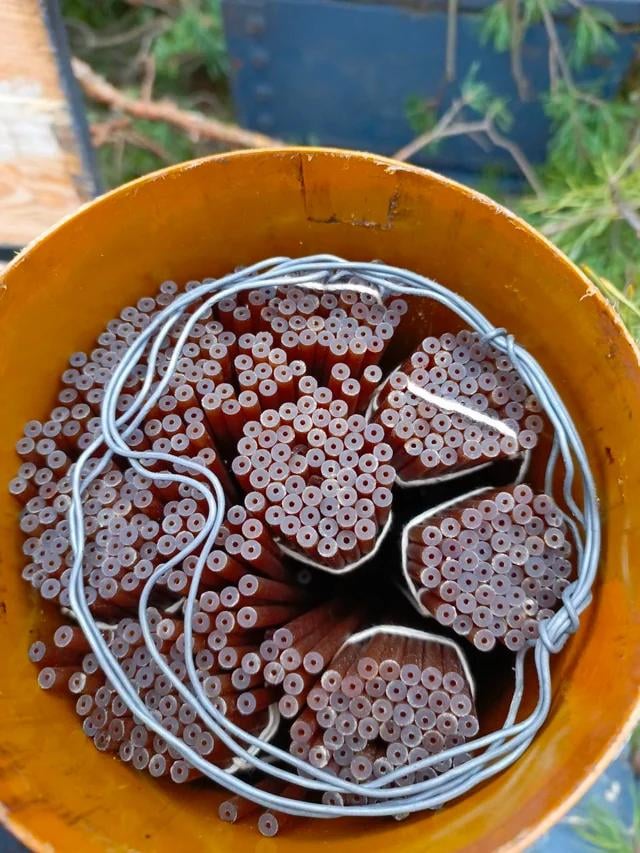
North Korean charges for artillery shells photographed by a Russian soldier and uploaded to Telegram with a description of the deficiencies and problems experienced. More details in comments.
by tractoroperator77






North Korean charges for artillery shells photographed by a Russian soldier and uploaded to Telegram with a description of the deficiencies and problems experienced. More details in comments.
by tractoroperator77
13 comments
Due to the systematic range spread when firing Korean shells, I carried out a check.
Based on the results of checking 5 random Korean NDT-3 charges with the same markings, it turned out:
– the copper wire is not always present in the sleeves
– obvious differences in gunpowder color, which indirectly indicates a difference in the quality of its combustion.
– on some sleeves there are traces of opening the sealing caps
– the equilibrium ligaments of gunpowder in many cartridges are disrupted.
From the above, I admit that the following factors can influence the difference in projectile flight range at the same settings:
Alternating presence/absence of a decoupler, which entails a difference in the resistance force of the projectile passing through the barrel.
Not the same quality of gunpowder, as a result of violation of sealing caps and further improper storage.
There may be an uneven amount of gunpowder in the charges.
lol the great leader can’t afford steel shrapnel. What bunch of pathetic clowns.
what does the inside of a regular charge look like?
lol! It seems they’re using M-80’s as charges now.
The literally definition of a fire cracker
North Korea is weak, just like Russia no fear versus those weak countries
lol lady fingers lmfao
I can’t imagine NK intentionally provided faulty shells so I feel it’s safe to assume this is their normal QC.
Lolll for a second I thought they filling there shells with mighty mites🙃
What is a purpose of a copper wire? Does it evaporate and “lubricates” barrel from the inside?
One has a spring-loaded flag that’s says BANG!
The translated comments refer to copper wire; I assume that’s the wonky blue-grey loops in the photos. I have no idea what function this serves in artillery propellant charges, but the thing that strikes me about those hoops is that they’re all different. Rather than being formed by automated machine or even by hand around a former, it looks like hanks of wire were formed into loops completely freehand and twisted in whatever random way held the loops in shape. In fact, the randomness of those loops looks like something that might have been produced by a child (or maybe a starving prisoner, I guess). Also, the random bends and kinks in the wire makes me wonder if the wire might have been recycled: maybe prior to being put in these shells, the wire was windings on transformers, motors or alternators. I’d expect the loops to be much more regular if whoever made these loops had been taking the wire directly off a spool.
I know next to nothing about explosives and artillery, but one thing I do know is that if you want to have a predictable boom, the explosive needs to be of a known quality and quantity. I can’t be bothered to count the number of tubes of explosive in each of these photos, but just by eyeballing it, I have the feeling the quantity varies.
Which leads me to another question: is there any valid reason for there to be copper wire in these shells? Is it possible that the only quality control measure in the ammunition factory was a final weight check of the round, and the copper wire is there to make up for the weight of propellant that’s missing for some reason? In other words, is what’s seen here possibly the consequence of the NK government setting unrealistic production quotas for an ammunition factory, and the factory hitting those numbers by whatever means possible?
Makes sense, North Korea wouldn’t care about its artillery being very accurate, its Seoul purpose is to rain carnage down at random on South Korean cities.